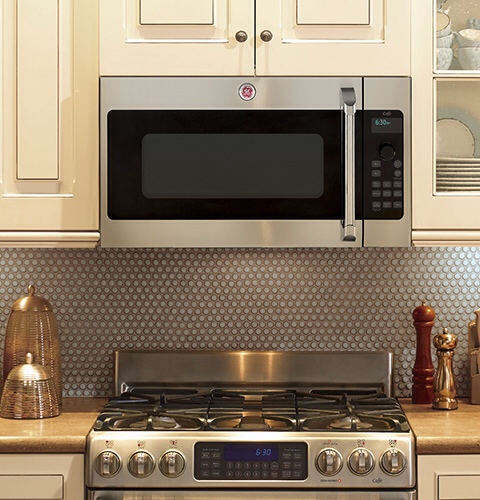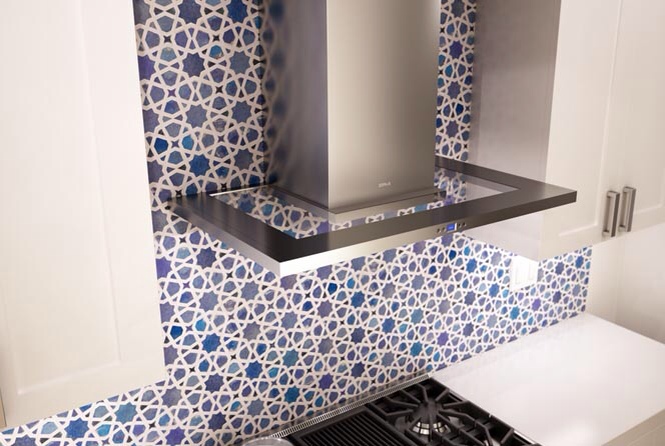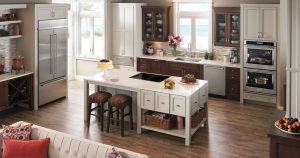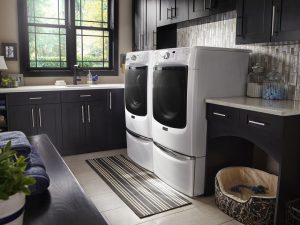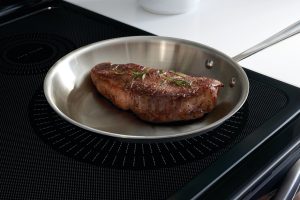Choosing a Range Vent Hood
Range Hood Guidelines
Common Sense Range Vent Hood Evaluation Tools
A. Requirements
- Ventilation objectives. Range hoods perform many functions. Sometimes hood vents are used merely to circulate air in the kitchen. Usually, they are needed to remove cooking odors, vapors, particulates, and moisture from the air over the cooktop surface. It's important to consider the type of cooking you'll be doing. For example, if you cook exotic dishes that are very aromatic, you may need a more powerful vent hood. Suppose you are considering a re-circulating hood because you don't have the ability to duct outside. You need to be aware that recirculating hoods will capture some particulates, but will do little to remove vapors or moisture from the room.
- Ductwork. If you are installing new ducting you'll want to make sure that you take the most direct, shortest path – the fewer turns, the better. Use the largest duct size that is practical for quieter more efficent operation.
- Makeup air. The 2009 International Residential Code (IRC) requires when installing new vent hoods exceeding 400 cfm, makeup air must be provide in an amount roughly equivalent to the exhaust CFM.
- Location. The location of the range will influence the type and size of the range hood. Is the range on on an island or peninsula? Where are the windows located? What is the ceiling height? Are there ceiling fans? How much space is available between adjacent cabinets?
B. Sizing the hood
Best hoods offer these recommendations for hood sizing.
- Under 60,000 BTU. If the maximum burner output on the cooking surface is under 60,000 btu, calculate a range hood capacity of 10 cfm per inch of cooking surface. For example, for a standard 30″ range, a range hood of 300 cfm would be adequate.
- Over 60,000 BTU. If the maximum cooking surface output is over 60,000 btu, calculate 100 cfm for every 1,000 btu. A 60,000btu cooking surface would take a 600 cfm hood.
- Grill or Griddle. If there is a grill or griddle add add 200 cfm to the estimate.
- Island Installation. For an island installation greater capacity is needed. Calculate 150 cfm per foot of cooking surface width. Add another 100 cfm for high performance cooktops.
C. Ducted vs Ductless. Most hood manufacturers recommend ducted over ductless hoods. However, there are conditions under which a ductless hood might be a better choice. For example, with the IRC requirement of makeup air for hoods exceeding 400 cfm, the additional cost for this provision may be prohibitive. Makeup air is unneccessary when using ductless ventilation. Also, the need for duct runs may make certain ducted installations impractical.
D. Microwave Hoods are often popular in mid-priced new homes. They are available from most major appliance manufacturers such as GE, Whirlpool, Frigidaire, KitchenAid, Jenn-Air, Electrolux, Sharp, Maytag, Bosch, and Viking. Customers like the convenience of the built-in microwave above the range. On the other hand, the ventilation capabilities of the hood are often sub-par. The ergonomics of a microwave over the range are not good, and they are thought to be unattractive by design professionals.
E. Height over cooking surfaces. Hoods should be located at least 24″ over the cooking surface. Refer to the manufacture recommendations. It's not a good idea to have them much more than 33″ over the cooktop because the hood begins to lose its effectiveness when it it too far away from the cooktop.
F. Hood designs. There are a host of different hood styles and designs from most major appliance brands as well as a variety of different specialty hood manufacturers such as AirKing, Best, Elica, Faber, and Zephyr. Visit a professional appliance retailer to view the many choices and learn more about this important topic. Universal Appliance and Kitchen Center carries all the major hood brands, and a good selection of the speciality hoods as well. Call or visit them at the locations below for expert advice.
NOW, two locations to serve you – Calabasas and Studio City:
Universal Appliance and Kitchen Center
- Choosing Between a Plastic and a Stainless Steel Dishwasher Tub
- Steam Dryers: Efficient, Gentle, and Wrinkle-Free Laundry Solution
- Benefits of a Smart Washing Machine
- Beverage Stations: Elevating Your Kitchen with the Latest Trend
- New Ways to Design Your Kitchen in 2024
- Should You Choose a Column Refrigerator?
- The Benefits of an Outdoor Pizza Oven
- Should You Choose a Freestanding or Slide-In Range?
- Understanding Microwave Wattage
- Standard or Pro Ranges: Which One is Best for Your Home?


